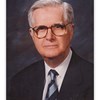Dr. Peterson is the director of the Center for Economic Education and the Scott L. Probasco Jr. Professor of Free Enterprise at the University of Ten-neesee at Chattanooga.
If inflation is a matter of sharp run-ups in the money supply (“too much money chasing too few goods”), I witnessed that phenomenon first-hand, and it was a lesson I’ll never forget. The time was the summer of 1945. The place was Berlin, site of four military powers—the U.S., France, Britain and the Soviet Union—occupying an utterly ruined, once-beautiful metropolis. As a member of the American armed forces, I saw right away what Stars and Stripes, the Army newspaper, was reporting: that a sizeable flea market had sprung up behind the burnt-out Reich chancellery on a corner of the Tiergarten (not far from the bunker in which Hitler had committed suicide), that the market functioned daily at all hours, slowing down only for darkness or drenching rain, that the number of traders was usually in the dozens but swelling to the hundreds on Sunday afternoons, that the trading—and higgling—was never in booths but always on foot with traders circling around to get the best bid-and-ask prices, with most merchandise sold generally passing from pocket to pocket. The traders were not Germans nearly so much as uniformed Russians and Americans with fewer British and French soldiers participating. With German money worthless, the currency was occupation marks—lots of it. Soviet plates were supplied by the U.S. Treasury Department, according to Stars and Stripes, the Soviet occupying forces were suddenly given months and months of back pay—in occupation currency. Russian officers frequently carried satchels full of it. Russian enlisted men often had bagfuls. Prices zoomed. German men and women, for the most part ragged, hollow-eyed, thin, forlorn- looking, peddled what wealth had escaped the bombing and burning—silver, jewelry, Zeiss binoculars, Leica cameras, Meissen china (frequently chipped) and bric-a-brac including ashtrays, lamps, clocks and cheap paintings—all at fancy prices. I saw a used commonplace alarm clock go for the equivalent of $85—in 1945 dollars. The main stock in trade, however, consisted of wrist watches and cigarettes (which became a kind of secondary currency). The watches and cigarettes were overwhelmingly supplied by the Americans, much of these items flown in unofficially by U.S. airmen, and overwhelmingly bought by the Russians. Prices became crazier. A carton of cigarettes went for $200. I saw Mickey Mouse wrist watches (which sold at home for about $5.95) command $150 and Waltham watches, retailing in the States for around $16.95, sell for $300. Understandably, the U.S. Army Post Office in Berlin did a land-office business in money orders, with the 82nd Airborne Division, the main U.S. contingent stationed in the German capital, sending home far more money than it had been paid. In the end, some $250 million worth of Soviet occupation currency, according to estimates, had been converted into dollars—with the bill of course picked up by the American taxpayer. Who else?
Inflation: Soviet Style, 1945
Monday, April 1, 1985
Republish
Republish This Article
This work is licensed under a Creative Commons Attribution 4.0 International License, except for material where copyright is reserved by a party other than FEE.
Please do not edit the piece, ensure that you attribute the author and mention that this article was originally published on FEE.org

